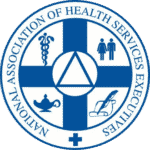The Association of American Medical Colleges (AAMC) recently confirmed their predictions of a major shortage of physicians and other clinical practitioners. This comes at a time when the volume of Baby Boomers is reaching retirement age and the statistics show that Americans are leading increasingly unhealthy lifestyles. Where are these trends leading us? Which states will be most affected? More importantly, how can we counteract these threatening and worrisome trends?
What the AAMC Reported
The AAMC report confirmed a shortage of up to 122,000 physicians by 2032. The study reflected that the shortage will affect both primary and specialty providers, including surgeons, pathologists, neurologists, radiologists, and psychiatrists. The biggest complicating factor is the aging U.S. population. The report stated that the population of those over 65 years of age would increase by 48% in the next decade alone. But the aging population cuts both ways; these statistics also mean that the majority of our current volume doctors themselves will be older than 65. The retirement of these physicians will have a greater impact on the supply pipeline.
To complicate matters, the U.S. population is not only getting older; it’s getting sicker, too. Just look at the statistics from the U.S. Center for Disease Control (CDC):
- 6 in 10 adults in the United States today have a chronic disease.
- 4 in 10 adults have two or more chronic diseases.
- These chronic diseases are the leading cause of death and disability, costing $3.3 trillion in annual healthcare costs.
- This includes heart disease, cancer, chronic lung disease, stroke, Alzheimer’s diabetes, and chronic kidney disease.
- Tobacco use, poor nutrition, lack of physical activity, and excessive use of alcohol all contribute to these statistics.
There is some good news; these emerging trends also show that the supply of advanced practice clinicians such as NPs, PAs, and APRNs will continue to increase during the same time frame. However, the study still predicts, “The overall supply of physicians will need to increase more than it is currently projected in order to meet this demand.”
However, the need for clinicians is not equal across geographies. A recent report shows that five rural states will be most affected by the shortage in clinical providers:
- Wyoming – Has 6 FQHCs.
- Montana – Has 14 FQHCs.
- Mississippi – Has 20 FQHCs.
- Oklahoma – Has 20 FQHCs.
- Arkansas – Has 12 FQHCs.
While all healthcare providers in these regions will feel the shortages, FQHCs serve a high percentage of these rural residents. The issue is compounded because FQHCs often struggle to compete with their larger urban counterparts to attract and retain healthcare workers of all types, including specialists and primary care providers.
How can FQHCs combat these shortages now — before the tipping point is reached in 2032?
Attracting Talent to FQHCs
The time is now to begin to prepare for the clinical shortages of the future by filling your organization’s talent pipeline with passive healthcare candidates along with young college and medical school students preparing for a career in the field. Attracting this talent to FQHCs is a full-time job and requires an “all hands on deck” approach to your sourcing and staffing efforts.
That’s why a partnership with a healthcare staffing agency like UHC Solutions makes sense. We understand healthcare and the niche that FQHC’s operate in. Contact our leading physician recruiters today.





